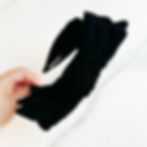Curiosity with C: Fun Phonics Activities for Kids
- Ngechent
- 17h
- 4 min read
Subtitle: Engaging Ways to Explore the Letter C

Objective of the Lesson
The objective of this lesson is to help students recognize and pronounce the hard "C" sound through engaging activities and creative prompts. By the end of the lesson, students will be able to read and write words that begin with the letter C, enhancing their phonics skills and fostering curiosity in learning.
Teaching/Learning Materials
Phonics Flashcards
Flashcards featuring words that start with the letter "C" (e.g., cat, car, cup).
Images corresponding to each word to enhance visual learning.
Phonics Worksheets
Worksheets with activities such as:
Fill in the blanks with words starting with "C."
Matching pictures with the correct "C" words.
Coloring pages featuring "C" words (e.g., crab, cake).
Storybooks
Picture books or stories that emphasize the letter "C" (e.g., "Chicka Chicka Boom Boom").
Interactive storybooks that allow kids to identify "C" words.
Interactive Games
Phonics Bingo using "C" words.
Memory matching games with "C" word pairs.
Craft Supplies
Materials for hands-on activities (e.g., scissors, glue, colored paper).
Create a "C" collage with cutouts from magazines or drawings.
Digital Resources
Educational apps focusing on phonics and letter recognition.
Online phonics games that highlight the letter "C."
Songs and Rhymes
Songs that incorporate "C" words (e.g., "The C Song").
Rhymes and chants to reinforce phonics skills.
Visual Aids
Posters of the alphabet with a focus on the letter "C."
Word walls featuring "C" words and images.
Sensory Materials
Sand or rice bins with "C" objects for tactile learning.
Letter "C" shaped molds for playdough activities.
Assessment Tools
Simple quizzes or oral assessments to evaluate understanding of "C" sounds.
Checklists for tracking progress in phonics skills.
These materials will create an engaging and effective learning environment, allowing children to explore and understand phonics through the letter "C" in a fun and interactive way.
Getting Started with Curiosity
Curiosity is a powerful tool for young learners. When children are curious, they are more engaged and excited to explore new concepts. This lesson will focus on the letter C and its hard sound, which are crucial for developing early reading skills. Through lively sentences and creative activities, students will learn to recognize words starting with C while also honing their storytelling abilities.
Presentation in Steps
Introduce the Featured Words
Start by introducing the prominent words: cap, cat, cub, cut, and cop. Write these words on the board and clearly pronounce each one. Encourage students to repeat after you, ensuring they emphasize the hard "C" sound. For instance, explain that the word "cap" represents a hat that can be worn outdoors, which often sparks excitement in children.
The cat wore a red cap on the map.
The cat sat flat on the mat with a bat.
The cub ran to hug the pup in the tub.
Cut the rug with the nut near the hut.
The cop saw the mop drop near the shop.
Read Sentences Together
Read the sentences below aloud together with the class. This interactive experience promotes sound recognition and encourages creativity:
As you read, ask students to listen for the hard "C" sound and spot the featured words. You might even ask for a show of hands when they hear a word that begins with "C", keeping them actively involved.
Phonics Tip Discussion
Introduce a simple phonics tip: The letter C can sound like K (as in "cat," "cap," "cop") or like S (as in "cent" or "circle"). Make it clear that today’s lesson focuses on the hard "C" sound. You could share that about 70% of words starting with C use the hard sound, making this lesson highly practical for early consonant recognition.
Creative Prompt
Encourage students to draw the cub hugging the pup in the tub. Ask them to focus on colors and details. Alternatively, challenge them to create their own sentence using the word "cut." This not only allows them to express their understanding of the letter C but also builds a sense of ownership over their learning.

Group Activity
Split the class into small groups. Task each group with creating sentences using the featured words. Afterward, have each group share their sentences with the class, which promotes communication and teamwork. For example, a group might proudly present: "The cop helped the cub cut the cap."
Individual Practice
Hand out worksheets that include the featured words and sentences for additional practice. Encourage students to write the words and sentences independently to reinforce their learning. This writing exercise is an excellent way for students to build confidence in their newfound skills.
Assessment of Learning
Evaluate students’ understanding with a simple assessment. Present a list of mixed words and ask them to identify which ones start with the letter C. You might also have them read the sentences aloud, allowing you to check their pronunciation and recognition of the hard "C" sound. To track progress, consider keeping a record of how many students can identify C words correctly at the beginning and end of the lesson.
Key Takeaways for Success
Fostering curiosity in young learners is vital for their growth. By emphasizing the letter C and its hard sound through fun activities, students improve their reading skills. The combination of phonics practice, creative prompts, and group collaboration not only enhances learning but also makes it enjoyable.
Homework Assignment
For homework, ask students to find three objects at home that start with the letter C. They can draw these objects and write a sentence for each, using the hard "C" sound. This activity will help reinforce what they've learned and encourage them to explore their surroundings with curiosity.
Through these fun phonics activities, you can help students build a solid foundation in reading words and sentences that start with the letter C. Remember, curiosity is the key to opening up a world of knowledge!

These engaging lessons inspire not only learning but also a lasting curiosity. Happy teaching!






























































































